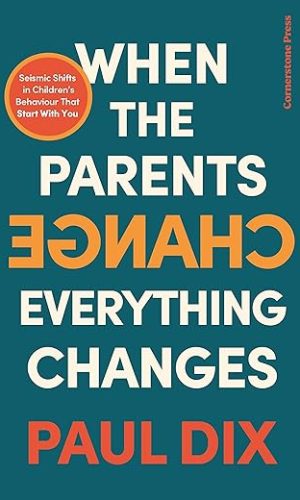Facilitating Meaningful Contact in Adoption and Fostering: A Trauma-Informed Approach to Planning, Assessing and Good Practice
£20.00
Most children who are fostered or adopted have some level of contact with their birth family — whether face-to-face or by letter — yet most of the time the psychological impact of contact on the child isn’t considered.
This book explores what attachment, neuroscience and trauma tell us about how contact affects children, and shows how poorly executed contact can be unhelpful or even harmful to the child. Assessment frameworks are provided which take the child’s developmental needs into account. The authors also outline a model for managing and planning contact to make it more purposeful and increase its potential for therapeutic benefit. The book covers the challenges presented by the internet for managing contact, unique issues for children in kinship care, problems that arise when adoptive parents separate and many other key issues for practice.
Brimming with practical advice and creative solutions, this is an indispensable tool for social workers, contact centre workers, and other professionals involved in contact arrangements or the therapeutic support of fostered and adopted children.
Read more
Additional information
| Publisher | Illustrated edition (21 Jun. 2014), Jessica Kingsley Publishers |
|---|---|
| Language | English |
| File size | 2954 KB |
| Text-to-Speech | Enabled |
| Screen Reader | Supported |
| Enhanced typesetting | Enabled |
| X-Ray | Not Enabled |
| Word Wise | Enabled |
| Sticky notes | On Kindle Scribe |
| Print length | 218 pages |










by alan burnell
We are surprised by this book as it copies a lot of what Family Futures have been saying for a long time and yet there is no reference to Family Futures at all despite our extensive writing and training on this topic.
by Nadia Clarke
Lots of useful and practical information 5+
by Christine Gordon
I do not feel that the review by Alan Burnell was helpful.. It says nothing about the content of the book and its potential usefulness. I thought this was what the stars were meant to represent rather than being a reflection of pique that a particular organisation is not mentioned.
Having read the book I feel that it would be very useful for any professional working in the adoption and fostering field and who are involved in contact arrangements. The book discusses the complexity of contact for all involved and the meaning that contact might have for children. It clearly outlines how to manage contact in a way that is therapeutic and which enables children to begin to make sense of past traumas.
I would recommend this book.
by E A KITSON
I bought this book several months ago and as a practitioner in the field I have found it an invaluable resource in my work with children who are looked after, in kinship care or who are adopted. I cannot recommend it highly enough.
It outlines the theory well and gives practical examples with some excellent case studies. Planning and supporting contact when children have complex and difficult histories requires a great deal of sensitivity and empathy for all concerned and this is explained and then illustrated here in great detail. The book has been invaluable not just in informing and guiding practice but in ensuring that the long term needs of the child remain uppermost in planning and supporting contact.
My personal experience in using the ideas contained in the book has been that the children involved are helped to navigate difficult loyalties and adult relationships whilst coming to terms with their past. The parents and carers involved also receive the empathy and support they need to come to terms with their own and with the circumstances of their children.
This is a welcome book given that there is a limited amount of literature in social work about the practicalities of supporting children for whom contact with people from their past is complex and confusing. This also applies to contact with siblings placed in other foster or adoptive families, particularly if the sibling relationship is a complex or a distant relationship. This book addresses these issues (and other related issues) in detail and provides the practising social worker with the theory and guidance about how to assist and support everyone involved.
There are also excellent chapters on the use of letterbox contact and using video messages. It is a book that can be dipped in and out of and is therefore eminently practical to use in a busy team. It is a must read for any social worker, parent, carer or therapist working with children where contact with previous family members or carers is an important part of the post placement plan.
by Malletts
Good. Useful book for those working with traumatised children.
by Mrs. E. C. Taylor-whiffen
A fantastic read! Very informative and well researched. Case studies were really useful. The authors show sensitivity to the needs and issues of all parties involved! Explores a range of contact situations and ways of supporting children of all ages in managing contact. A must have for social workers, therapists, managers and policy makers! The ideas and insights will empower professionals to support the healing of children affected by relational trauma.
by Anne Rogers
Louis Sidney and Elsie Price
Review by Anne Rogers DPsych
I am not a social worker but a psychotherapist [working with adults] born out of a career in nursing, including mental health nursing, and teaching and with a life long interest in children and their welfare. It was suggested to me that I might be interested in Louis and Elsie’s book on fostering and adoption. This book took me into realms that I knew little about. Of course I knew people that had adopted children, including children from abroad; I knew adults who had been adopted as a child and people who were foster carers. None of these had prepared me for the care and dedication to the welfare of those children forced into the world of fostering and adoption by the breakdown of their birth families shown by these two authors. We hear so much about social workers with almost impossible caseloads; we are getting used to – or not – newspapers vilification of social workers whenever anything goes wrong, but very little – almost nothing -of the dedication of such workers to these children highlighted by these two authors. How widespread this way of working is I do not know, hopefully this book will inspire others.
The book is illustrated through out by many case studies of the work with the different families. I was particularly struck by the way meetings would be arranged between the children with their birth and adoptive parents aimed at enabling the children to verbalised their concerns and anxieties and to be able to ask their parent[s] some of the questions that were troubling them. The questions were formulated with the help of Louis or Elsie and would often be read out by one of them at the meeting with the birth parents while the child can sit firmly supported by the adopting parents. Most of us know of the questions we would like to ask or have asked our parents ‘Why did you /didn’t you … but were afraid to ask, often even to formulate. Often these questions niggle away, how many more there are for children traumatically separated from their birth parents.
Louis and Elsie sometimes advocate the use of ‘letters that will not be posted’ letters that allow the child to verbalise some of the feelings that they are not able to say to their parents for whatever reason – the death of a parent, adoption from abroad, or maybe the inappropriateness of a face to face meeting. This is an activity I have used sometimes with my own clients, especially when the person they would like to talk to is no longer available to talk to, sometimes to also formulate what they imagine they would reply! This is an activity helpful for many of us at times in our lives. Once feelings, worries are put into words they can be thought about, until that can happen they sit there fermenting and troubling. The book is full of many such creative ideas aimed at healing.
This is a book I would recommend to anyone interested and involved in the welfare of children – social workers and managers and those directly involved with the care of looked after children of course; health workers also but maybe teachers as well, they also have an important role in the well being of looked after children in their care and it is important that they are aware of many of the difficulties these children encounter and in what is being done to help them.
Congratulations Louis and Elsie.